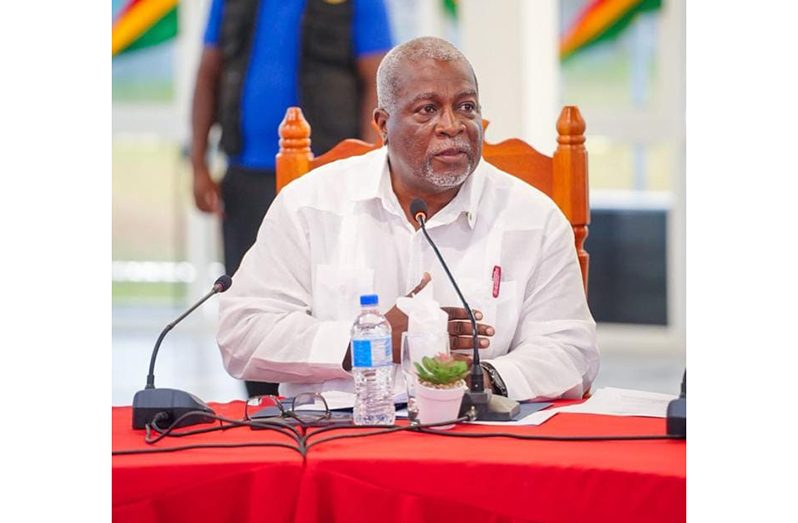-PM tells regional stakeholders
AS Guyana continues to tackle energy insecurity, Prime Minister (PM), Brigadier (Ret’d), Mark Phillips, on Saturday, urged regional stakeholders to get on board and provide recommendations to achieve sustainable energy.
He made these remarks during the closing ceremony of the Regional Energy Kilo-Walk, which was just one of many activities planned to mark Caribbean Community (CARICOM) Energy Month.
The theme for CARICOM Energy Month 2023 is ‘Accelerating innovation, driving electrification.’
According to the PM, there is dire need for focus to be placed on developing sustainable energy solutions because renewable energy is pivotal to having a sustainable, low-carbon future.
“Therefore, we must show up and deliver solutions in this regard for our people and the planet. Now is the time for informed decision-making at all levels, and now is the time for actions to place people at the centre of our sustainable energy transition,” Prime Minister Phillips stated.
Touching on another element that is important within the energy transition, which is human capital investment, the PM underscored that in order to support the demand for skilled energy professionals, the region needs to enhance its educational institutions at all levels.
Notwithstanding this, the government official did not shy away from addressing regional issues that hinder progress such as the dependence on fossil fuels, aging infrastructure, high energy costs, and climate change vulnerability.
He said, “Guyana is no stranger to these challenges. Within the last two months, the main utility has experienced historic peaks in electricity demand due to the rising temperatures,” while revealing that his government has acknowledged this issue and has started rolling out initiatives to address it.
Phillips then went on to say that progress is being made to provide an energy mix that includes hydropower, natural gas, solar and wind, which leads to more than 500 megawatts (MW) of newly installed capacity for residential and commercial users.
“Ultimately, the Government of Guyana wants to ensure that households and businesses benefit from affordable, stable, and reliable energy,” the PM firmly remarked.
He then went on to explain how Guyana’s energy plan supports the objectives of the Low Carbon Development Strategy (LCDS) 2030, which aims to deliver greater economic, environmental and social development.
Highlighting some of the initiatives, such as the gas-to-energy project, which aims to provide 300 megawatts of power, the PM said that it represents the “largest investment made in the electricity sector and the single largest engineering, procurement and construction contract undertaken.”
In the area of hydropower, he spoke on the benefits of the Amaila Falls Hydropower station (AFHP). The AFHP, with its potential 165 megawatts of power generation, could have been a game-changer for Guyana, but the project was not pursued by the former APNU+AFC coalition administration.
He also mentioned that works are ongoing for the construction of a 0.15MW Hydro at Kato, Region Eight (Potaro-Siparuni), a 1.5 MW hydropower facility at Kumu and the rehabilitation and upgrade of the 700 kW Moco-Moco hydropower plant in Region Nine (Upper Takutu-Upper Essequibo).
Additionally, Guyana has commissioned two solar PV farms in Lethem and Bartica totaling 2.5 megawatts (MW) under the Energy Matrix Diversification programme funded by the Inter-American Development Bank and a 0.65 MW solar PV farm for Mahdia is currently under construction, which will be completed in 2024.
In addition, with financing from the Guyana REDD+ Investment Fund (GRIF) under the Guyana Utility-Scale Solar Photovoltaic Program (GUYSOL), solar PV farms are being installed in Berbice, Essequibo and Linden, totaling 33 megawatts.
Moreover, in order to bring power to remote communities, investments are being made in renewable energy systems for off-grid areas as part of a rural electrification drive.
“For example, 19 solar PV-powered mini-grids totaling 0.6MW were installed this year across Regions One, Two, Seven, Eight, Nine, and 10, benefitting 3,880 households and over 20,000 individuals,” the PM revealed.



.jpg)








